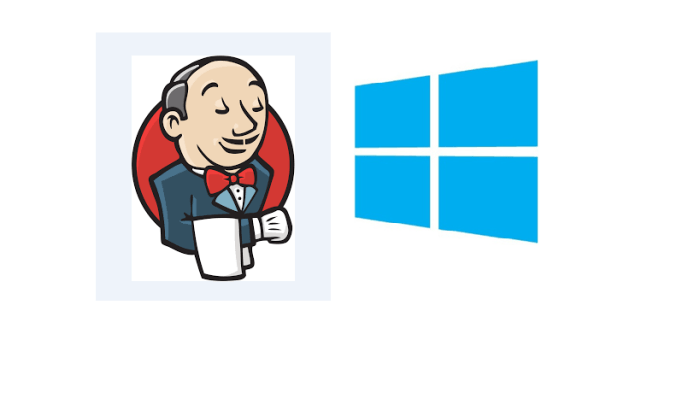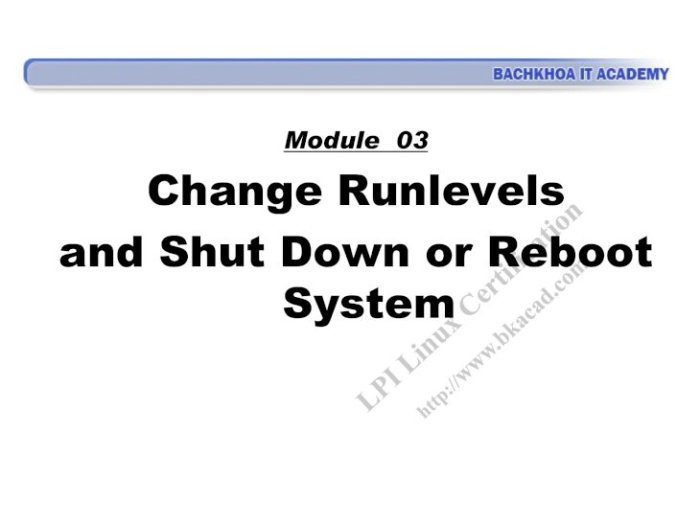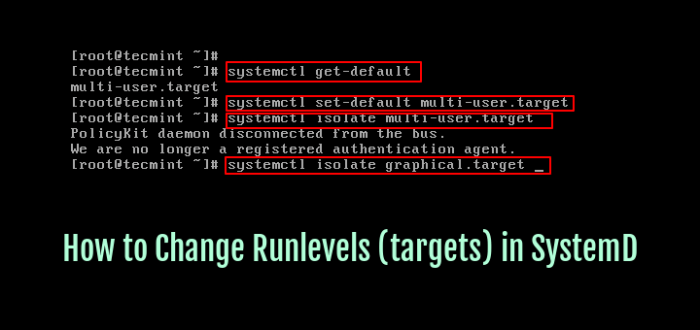Lab 8-2 change runlevels and shutdown or reboot system – Embark on an enlightening journey through Lab 8-2, where we delve into the intricacies of runlevels, shutdown, and reboot operations. This exploration will illuminate the fundamental concepts, practical techniques, and troubleshooting strategies that empower system administrators to maintain optimal system functionality.
Runlevels play a pivotal role in system operation, defining the operational state of the system. We will explore the different runlevels, their descriptions, and typical use cases, equipping you with a comprehensive understanding of their significance.
Runlevels: Lab 8-2 Change Runlevels And Shutdown Or Reboot System

Runlevels are a fundamental concept in system operation, defining the different states that a system can be in. Each runlevel represents a specific configuration of services and processes that are active, determining the overall functionality and behavior of the system.
The following table summarizes the different runlevels, their descriptions, and typical use cases:
| Runlevel | Description | Use Case |
|---|---|---|
| 0 | Halt | Powers off the system |
| 1 | Single-user mode | Allows a single user to perform maintenance tasks |
| 2 | Multi-user mode without NFS | Supports multiple users without network file system |
| 3 | Full multi-user mode | Supports multiple users with network file system |
| 4 | Unused | Reserved for future use |
| 5 | X11 | Starts the X Window System |
| 6 | Reboot | Reboots the system |
Changing Runlevels
Changing runlevels involves modifying the system’s configuration to switch between different states. This can be achieved using the ‘init’ command or the ‘telinit’ command.
- Using ‘init’: The ‘init’ command is the traditional method for changing runlevels. It takes a single argument, which specifies the desired runlevel.
- Using ‘telinit’: The ‘telinit’ command is a symbolic link to ‘init’ and provides a more user-friendly interface. It takes a single argument, which specifies the desired runlevel.
For example, to change to single-user mode, you would use the following command:
init 1
To change to multi-user mode with network file system, you would use the following command:
telinit 3
Shutdown and Reboot
Shutdown and reboot are two distinct operations that involve bringing the system to a halt or restarting it, respectively.
- Shutdown: The shutdown command gracefully terminates all running processes and halts the system. It takes several options, including ‘-h’ to halt the system and ‘-r’ to reboot the system.
- Reboot: The reboot command restarts the system without terminating running processes. It takes several options, including ‘-f’ to force a reboot and ‘-n’ to reboot without syncing the file systems.
For example, to perform a clean shutdown, you would use the following command:
shutdown
h now
To reboot the system immediately, you would use the following command:
reboot
f
Troubleshooting, Lab 8-2 change runlevels and shutdown or reboot system
When changing runlevels or performing shutdown/reboot operations, you may encounter various issues. Here are some common issues and their troubleshooting steps:
- Stuck processes: If a process is preventing the system from shutting down or rebooting, you can use the ‘ps’ command to identify the process and terminate it using the ‘kill’ command.
- Incorrect runlevel configuration: If the system is not booting into the desired runlevel, you can check the ‘/etc/inittab’ file to verify the runlevel configuration.
Answers to Common Questions
What is the significance of runlevels?
Runlevels define the operational state of the system, determining which services and applications are running. Understanding runlevels is crucial for system administrators to manage system resources and ensure optimal performance.
How do I change runlevels?
Runlevels can be changed using the ‘init’ or ‘telinit’ commands, followed by the desired runlevel. For example, to switch to single-user mode, use ‘init 1’.
What is the difference between shutdown and reboot?
Shutdown gracefully halts the system, allowing all processes to complete and data to be saved. Reboot, on the other hand, terminates all processes and restarts the system, effectively reloading the operating system.


